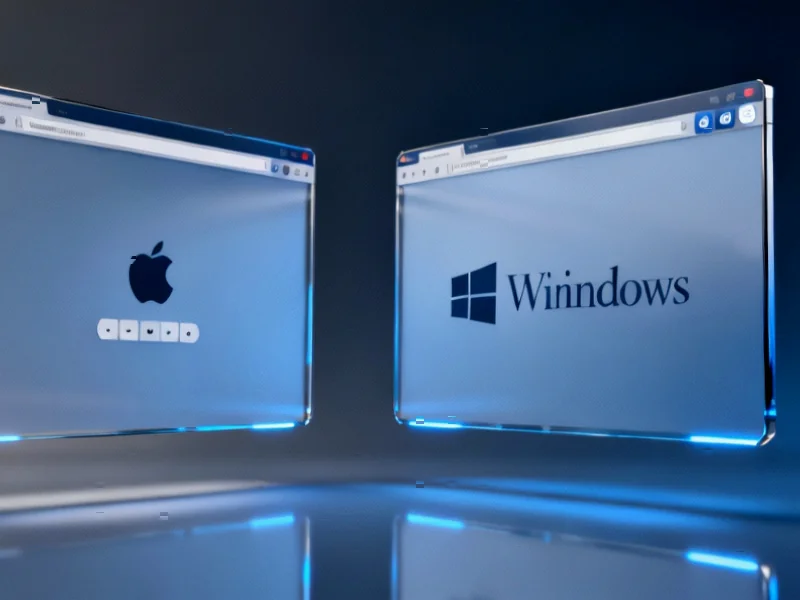According to TechSpot, Apple will launch an upgraded version of Siri in March 2026 featuring generative AI capabilities powered by Google’s Gemini model. The companies have struck a deal where Apple will pay Google an undisclosed sum to develop a custom Gemini model that runs on Apple’s servers rather than Google’s infrastructure. This arrangement follows failed negotiations with Anthropic, which reportedly demanded a multi-billion-dollar contract after its Claude model became the front-runner in internal testing. The new Siri will debut with iOS 26.4 next March, alongside a rumored smart display, with full operating system updates including iOS 27 previewed at WWDC 2026. This unexpected partnership represents a major strategic shift for Apple’s AI ambitions.
The Billion-Dollar AI Catch-Up Strategy
Apple’s decision to license Google’s technology reveals the company’s fundamental weakness in the generative AI race. While competitors like Microsoft, Google, and even startups have deployed sophisticated AI assistants, Apple’s legendary vertical integration strategy has failed to produce competitive AI models internally. The reported multi-billion-dollar price tag that scared Apple away from Anthropic’s Claude suggests Apple is willing to spend significant capital—likely in the low billions—to avoid falling further behind. This represents a classic “build vs. buy” dilemma where Apple has chosen to buy time while it continues developing its own AI capabilities behind the scenes.
The Privacy Paradox and Server Strategy
Apple’s insistence on running Gemini on its own servers rather than Google’s infrastructure is a masterclass in brand protection. By controlling the physical infrastructure, Apple can maintain its privacy-first marketing narrative while effectively outsourcing the AI intelligence. This hybrid approach allows Apple to claim technical privacy safeguards while benefiting from Google’s AI advancements. However, this creates a fascinating tension: Apple customers who chose iPhone specifically to avoid Google’s data collection practices may question whether their queries are truly private when processed through Google’s algorithms, even if on Apple’s hardware. The company will need to carefully communicate how data flows through this partnership to maintain consumer trust.
The Three-Way AI Chess Match
This deal fundamentally reshapes the competitive landscape beyond just Apple and Google. Microsoft, which has heavily invested in OpenAI, now faces the combined might of Apple’s hardware ecosystem and Google’s AI technology. For Google, this represents a strategic coup—they get paid licensing fees while potentially gaining insight into how millions of Apple users interact with AI. More importantly, they prevent Apple from aligning with Microsoft-backed OpenAI, which would have created a much more dangerous competitive threat. The failed Anthropic negotiations suggest that smaller AI players are demanding premium prices, potentially consolidating power with the tech giants who can afford these massive licensing deals.
The Revenue Implications and Ecosystem War
Financially, this partnership creates an interesting revenue stream for Google while potentially protecting Apple’s core services business. By limiting the partnership strictly to Gemini and excluding other Google apps, Apple prevents Google from gaining deeper footholds in its ecosystem. This suggests Apple views AI as a feature rather than a platform—something to enhance existing services rather than create new revenue streams. However, the long-term risk is that Apple becomes dependent on Google’s AI technology, similar to how Google pays Apple billions annually for Safari search default placement. This could create another regulatory headache for both companies under increasing antitrust scrutiny.
The Race Against Time
The delayed timeline—pushing the AI Siri launch to March 2026 instead of this spring—reveals the technical challenges of modernizing Siri’s legacy codebase. Apple’s struggle to integrate “old, inefficient code” with modern large language models suggests deeper architectural issues that can’t be solved simply by licensing external AI. This gives competitors nearly two more years to advance their AI capabilities before Apple even enters the market with its hybrid solution. The risk for Apple is that by the time their Gemini-powered Siri launches, the AI assistant landscape may have evolved beyond what today’s technology can deliver, forcing them into perpetual catch-up mode despite their massive investment.
Broader Ecosystem Implications
This partnership signals that even Apple recognizes it cannot build everything in-house in the AI era. The company that famously controls every aspect of its product stack from silicon to software is now relying on its historic rival for core intelligence capabilities. This could open the door for more selective partnerships in other areas where Apple trails competitors. More importantly, it establishes a precedent for how tech giants might collaborate in areas where development costs and technical challenges have become prohibitive even for the wealthiest companies. As AI development costs continue soaring, we may see more unexpected partnerships between traditional rivals who recognize that competing alone is no longer feasible.




